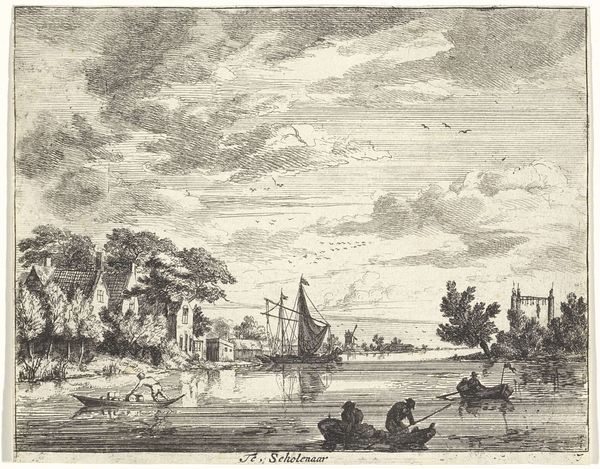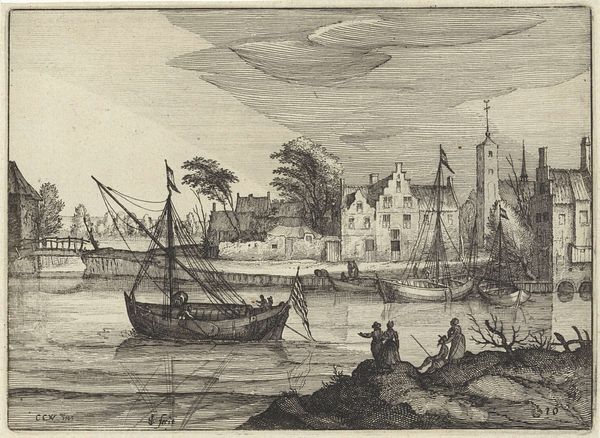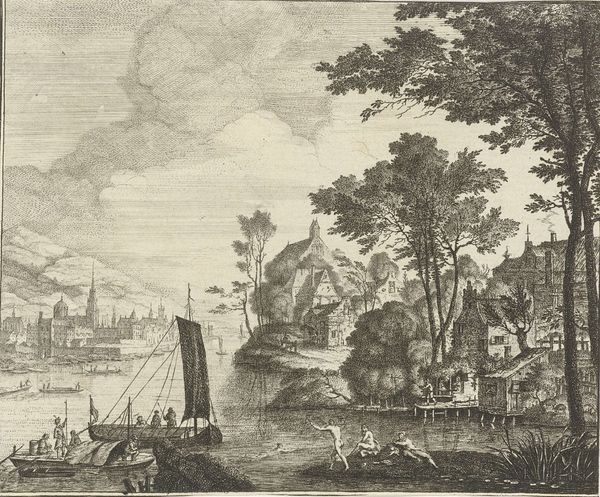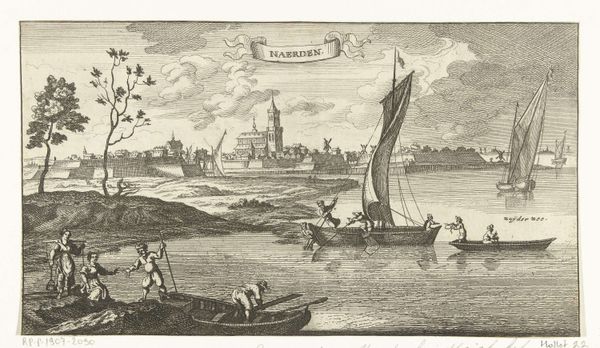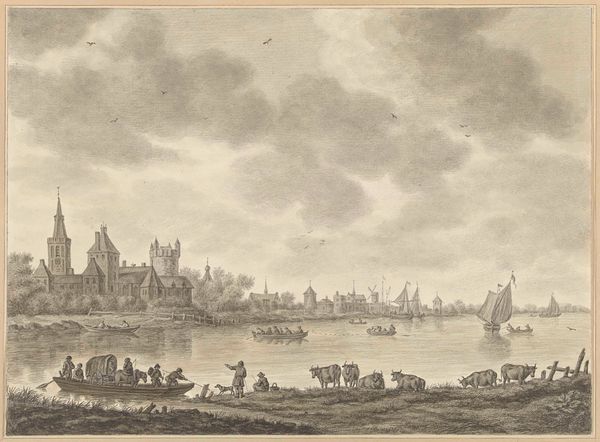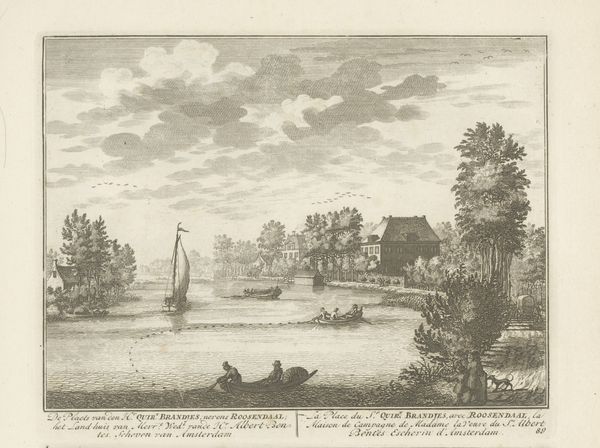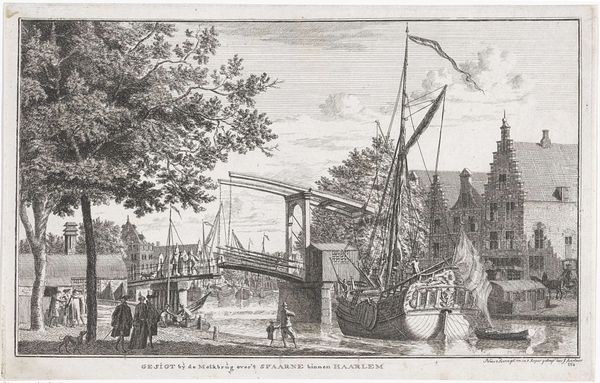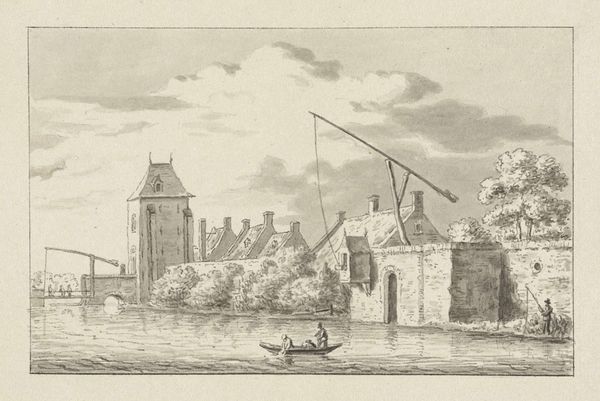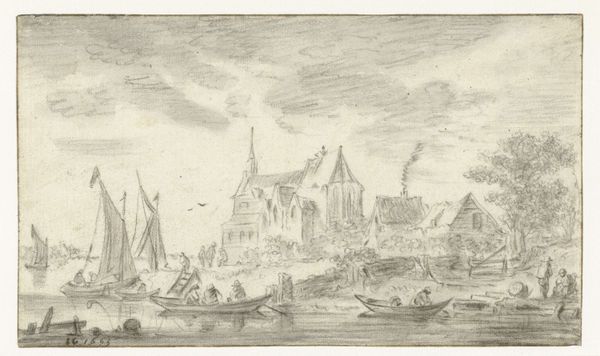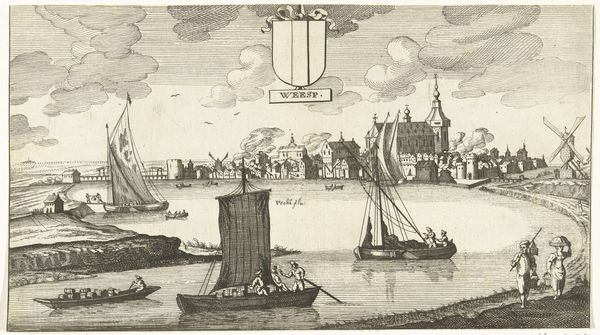
print, engraving
#
dutch-golden-age
# print
#
landscape
#
river
#
line
#
cityscape
#
engraving
Dimensions: height 147 mm, width 184 mm
Copyright: Rijks Museum: Open Domain
Jan Vincentsz. van der Vinne created this print, 'View of the Spaarne,' using etching, a printmaking technique dependent on acid. The design is first drawn with a needle onto a wax-covered metal plate. This exposes the metal, which is then submerged in acid. The longer it sits, the deeper the lines. Ink is applied, the plate is wiped clean, and then it's pressed onto paper. The result is a mirror image of the original design, with a distinctive crisp line. Looking at the print, you see the Spaarne river bustling with activity, from the figure leaning over a balcony to the boats on the water. Etching was an important method of image distribution in the early modern era. The lines of the print describe the textures of the architecture, the reflections on the water, and the movement of the clouds. Consider the labor involved – the skilled hand of the artist, the chemical processes, and the mechanical reproduction. Appreciating the print's materiality allows us to reflect on its social context and the rise of visual communication in the Dutch Golden Age, challenging traditional notions of fine art and craft.
Comments
No comments
Be the first to comment and join the conversation on the ultimate creative platform.
